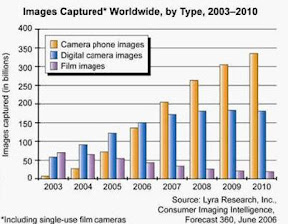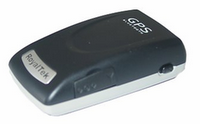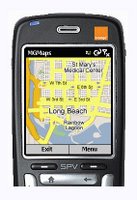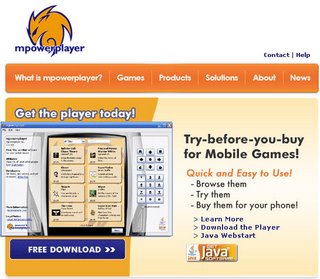.
 The "earth first" potential of the NASA/Google alliance takes on additional significance given the wide blog-o-sphere announcement of the International Symposium on Digital Earth get-together in San Francisco in this coming June.
The "earth first" potential of the NASA/Google alliance takes on additional significance given the wide blog-o-sphere announcement of the International Symposium on Digital Earth get-together in San Francisco in this coming June.On June 5th 2007, the 5th International Symposium on Digital Earth (ISDE5) will open in the Bay Area of San Francisco, California, USA. The symposium will span four days and will address a broad national and international audience across a spectrum of industry, academic, government, and citizen attendees. All individuals who share a common interest in the concept of a digital Earth are urged to participate and attend. The Digital Earth vision embraces a philosophy that any citizen of the planet, linked through the Internet, should be able to freely access a virtual world of information and knowledge resources.
This philosophy supports the dream of ubiquitous education for the people of the planet. A rich convergence of technological advances, active visionaries, and recognition of the paramount need for humans to better understand the Earth and its systems comprises the character and history of this dynamic and exciting enterprise.
This international vision encompasses the virtual and 3-D representation of the earth with vast amounts of scientific, natural, and cultural information that is partially referenced and interconnected with digital knowledge archives from around the planet to describe and understand the Earth, its systems, and human activities.
The Digital Earth community is dedicated to building a virtual global commons to promote "down to Earth" solutions supported by cooperative web-based protocols using standards, databases, analytical and visualization tools that will foster the creation of appropriate applications for a sustainable future. A consortium of global experts founded the International Society for Digital Earth in 2006 to promote the evolution and implementation of the Digital Earth vision.
ISDE5 Nominations
I would like to nominate two candidates that should be IMHO noted contributors to the "down to earth"contributions.
Global Biodiversity Information Facility
(with Google Earth bio-mash)
 The GBIF GE Bio-Mash - or where are all those critters?/
The GBIF GE Bio-Mash - or where are all those critters?/
The Global Biodiversity Information Facility is building a Internet accessible link to literally millions of "specimens". Most of the world's biologic diversity is located in the developing regions where as the dominate archive of those bio-diverse regions are held within developed nations. Essentially the GBIF is geotagging as much of the known via Google Earth. Put a time line on the collection and its classification and patterns may emerge? Give a HOOT! Don't pollute!
Good managers of natural resources and policy-makers know that their best decisions are based on results from the most accurate scientific analyses. Such analyses are based on solid, documentable data that have been recorded directly from the observation of nature. Such records are called 'primary' data. Biodiversity is a handy, one-word name for all the species on the Earth, the genetic variety they possess, and the ecological systems in which they participate. Another way of thinking about biodiversity is as the 'living resources' portion of 'natural resources'.A large part of the primary data on biodiversity are the 1.5 - 2.0 billion specimens held in natural history collections, as well as many geographical and ecological observations recorded by various means and stored in various media. In making living resource policy and management choices, decision-makers are often forced to rely on analyses that are not based on primary data. This is because the world's store of primary data about biodiversity is not at present readily and easily accessible.
Biodiversity is found around the world - there are micro-organisms between granules of rock 3 km below the Earth's surface, rootless plants in the Atacama Desert, thousands of species of beetles in a single rain forest tree. However, biodiversity is not distributed evenly across the face of the planet. An estimated 75% of all species are found in the developing world.
Information about biodiversity (natural history collections, library materials, databases) likewise is not distributed evenly around the globe. Three-quarters or more of data about biodiversity are stored in the developed world. However, most of the data that may be needed can't be transferred because either they are not digitised, or capacity to handle digital information is lacking, or both. Facilitating digitisation and global dissemination of primary biodiversity data, so that people from all countries can benefit from the use of the information, is the mission of the (GBIF).
Conservation Air Patrol
(With National Geographic geotagged images)
 Conservation Air Patrol
Conservation Air PatrolMy second nominee group, the Conservation Air Patrol, transverses Africa counting animals, documenting environmental degradation, and from what I hear swatting flies while getting the job done. Read about then add the National Geographic "MegaFlyover" to your Google earth via National Geographic and Wildlife Conservation Societies, “MegaFlyover”. This team plus National Geographic should be considered as enabling one of the original Mash-up".











 What happens when we zoom in on Big National Park? Wow, this is fast...
What happens when we zoom in on Big National Park? Wow, this is fast... 

 Once you have the BtGPS figured out, I am encouraging you to immediately download a copy of the MGmaps. It is a very excellent personal navigation device application for your Symbian 60 smartphone. Its a get your map anywhere/anytime via downloading Google Map streets and satelite images via the Google Mobile design.
Once you have the BtGPS figured out, I am encouraging you to immediately download a copy of the MGmaps. It is a very excellent personal navigation device application for your Symbian 60 smartphone. Its a get your map anywhere/anytime via downloading Google Map streets and satelite images via the Google Mobile design. 








